Research Methods: Peer Review of Kaitlin Jones' Psychology Proposal
VerifiedAdded on 2023/01/18
|5
|1063
|20
Report
AI Summary
This document presents a peer review of a psychology research proposal titled "Gender Differences and Category Set in Free Recall" by Kaitlin Jones. The review addresses the research questions, hypotheses, methodology, and APA style adherence. The reviewer critiques the introduction's effectiveness in establishing the hypotheses, analyzes the proposed mixed ANOVA methodology, and evaluates the sample size and characteristics. The review also highlights APA style errors, such as incorrect in-text citations and page numbering, and discusses the study's limitations, including a lack of cohesiveness and ambiguity in supporting the hypotheses. The strengths of the study, particularly its research methodology, are also acknowledged, alongside suggestions for improvement. Overall, the review offers a comprehensive assessment of the research proposal, providing valuable insights into its strengths and weaknesses.
1 out of 5
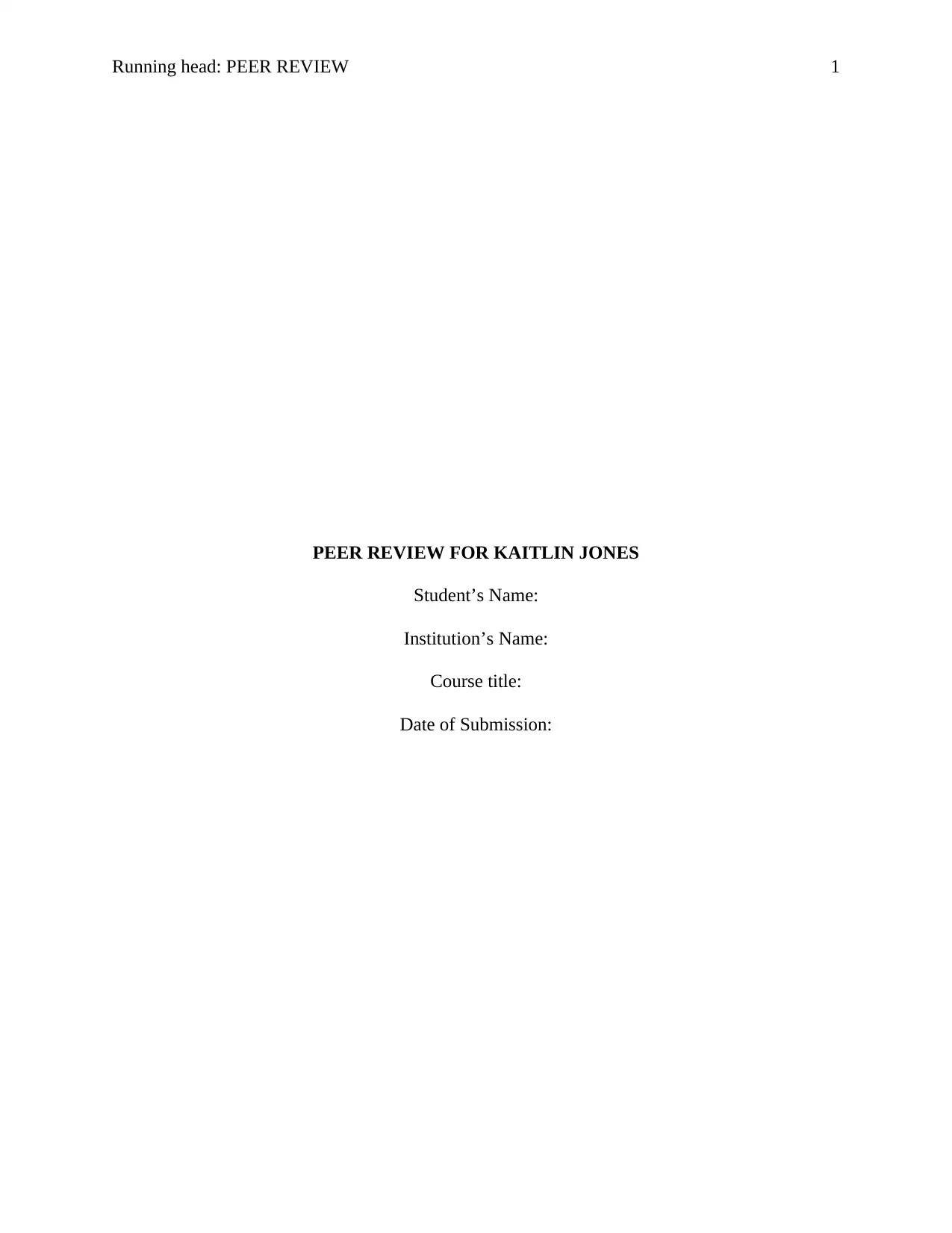
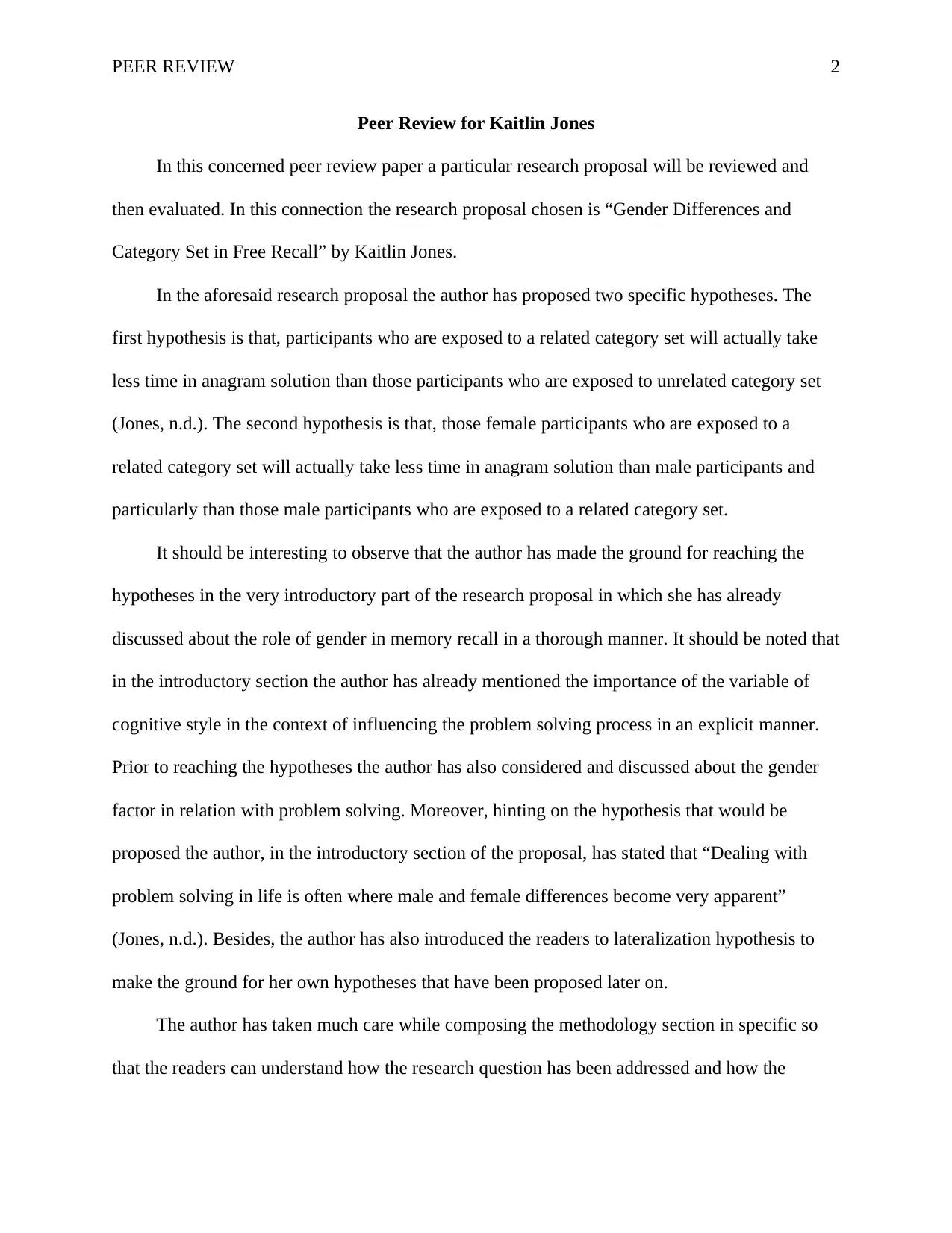
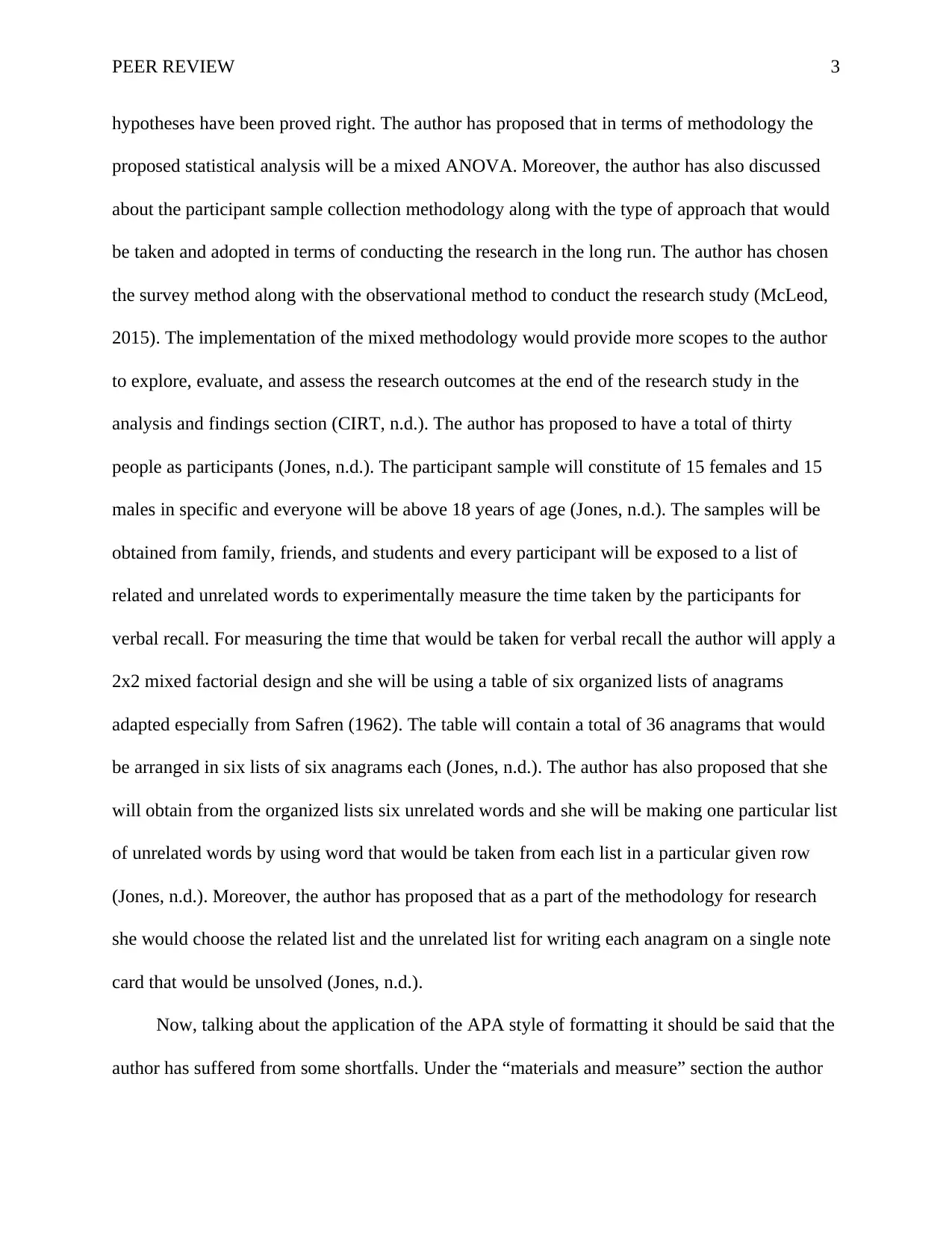
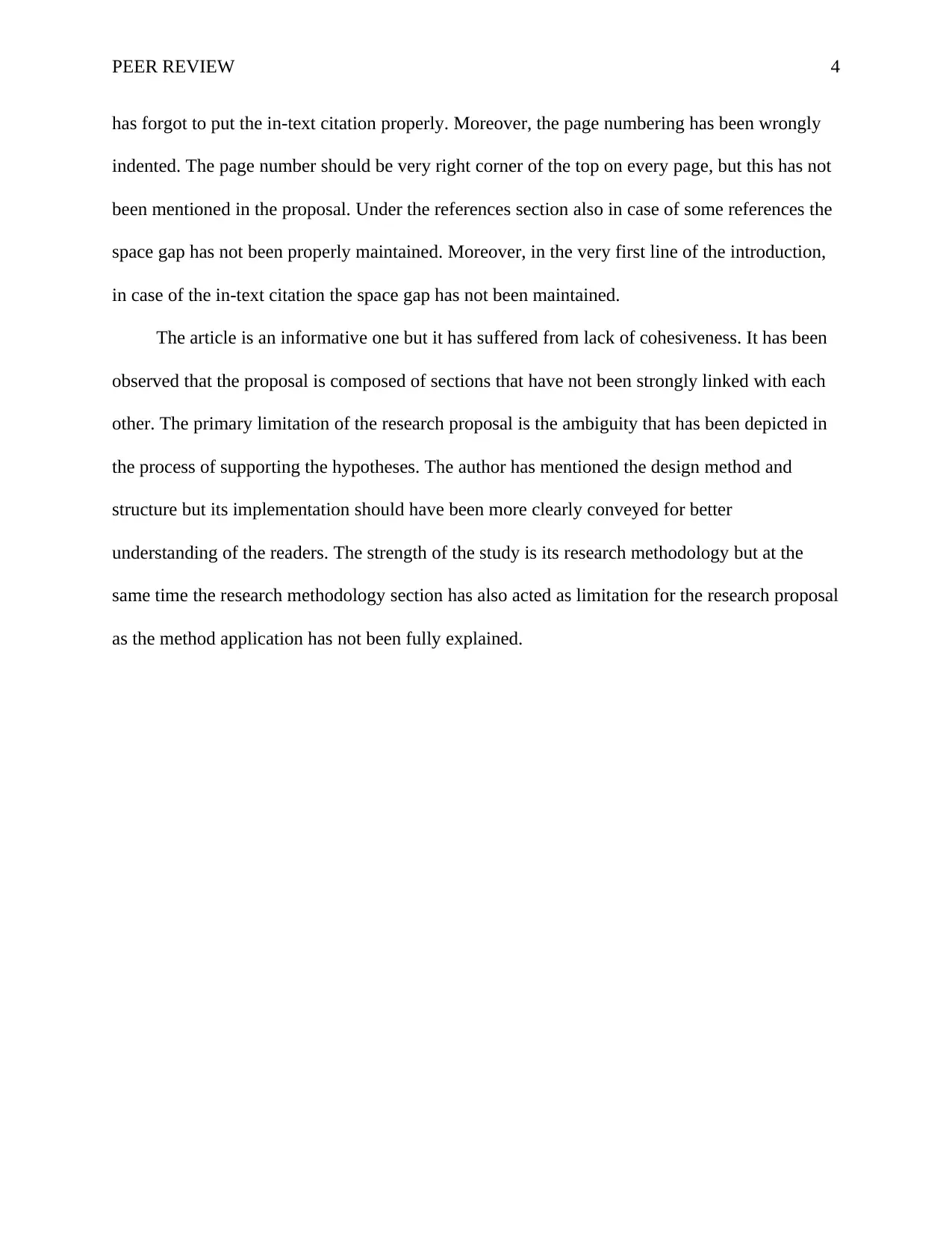
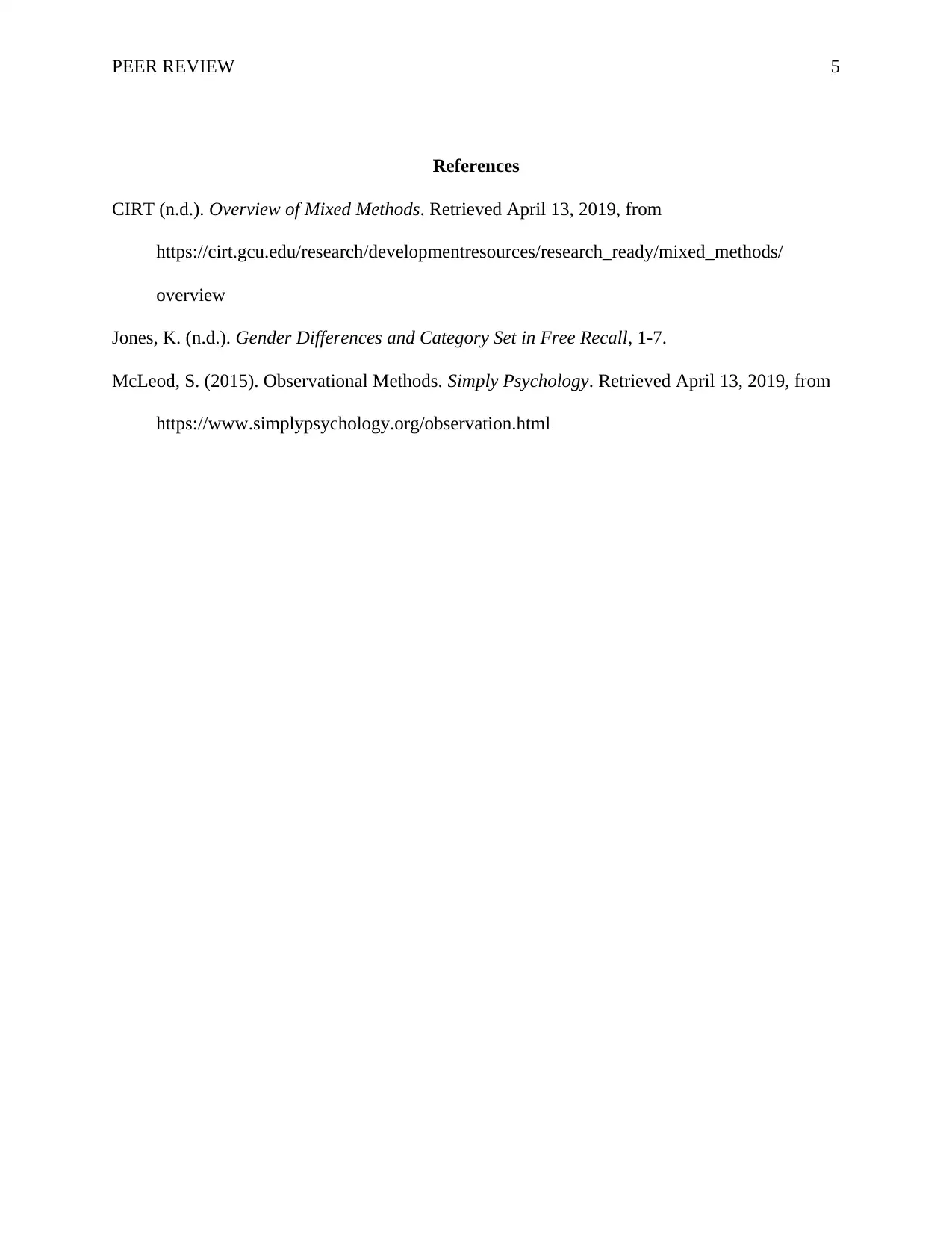





![[object Object]](/_next/static/media/star-bottom.7253800d.svg)